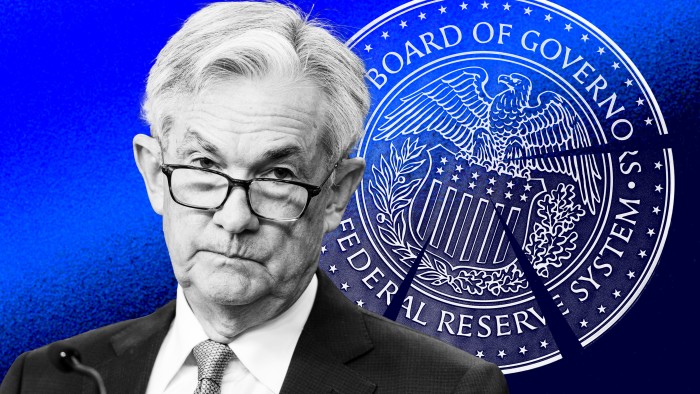Risk of Fed fissures grows as inflation fight tests resolve

Roula Khalaf, Editor of the FT, selects her favourite stories in this weekly newsletter.
The writer is chief economist at KPMG US
Until now, Federal Reserve chair Jay Powell has effectively corralled his colleagues to show a united front at key turning points for monetary policy. However, his job has just got a lot more complicated.
The Fed is poised to raise short-term interest rates by a quarter of a point on Wednesday in what was hoped to be the final rate hike of this cycle. That will push the benchmark Fed funds target to a 5 to 5.25 per cent range.
The economy slowed but inflation accelerated in the first quarter. The Fed’s preferred measure of inflation — the core personal consumption expenditures price index — jumped to a 4.9 per cent annualised pace in the quarter, the hottest in a year. That is the wrong direction and will no doubt spur debate about whether the Fed can signal a definitive end to rate rises at the conclusion of the May meeting.
The US central bank sees fighting inflation as a marathon, not a sprint. History is littered with central banks that gave up before they crossed the finish line. The result was a more corrosive bout of inflation or worse: stagflation.
The Fed hoped to keep credit conditions tightening even after it paused on hikes. Inflation-adjusted rates were expected to rise as inflation cooled. The inflation data for the first-quarter suggests that inflation has become sticky, which could challenge that strategy.
Further complicating matters is the tightening of credit due to recent financial market turmoil. No one knows exactly how much more credit conditions will tighten. Estimates range from what would equate to 0.5 to 1.5 percentage points in short-term rate rises. That is before increasing problems in the office market, which could add insult to injury. Office leases are resetting, and vacancies are rising. That will keep banks, which account for a disproportionate amount of commercial real estate loans, on the defensive.
The Fed’s Senior Loan Officer Survey for the first quarter is due out on May 8, after the central bank meets. The leadership will have a sense of the direction of those results but not the full report; we are still flying blind on the tightening in the pipeline. The same survey revealed in January that 45 per cent of banks were already tightening lending standards for commercial and industrial loans; 69 per cent of loans for construction and land development were constrained.
Companies with fewer than 250 employees, which are the backbone of the labour market, are especially vulnerable to those shifts. Those firms accounted for a record-breaking 70.9 per cent of job openings at the end of January, but have since lost steam. Job openings among the smallest businesses – less than 10 employees – plummeted in March, while layoffs and separations surged to their highest pace since the onset of the pandemic.
Those concerns have begun to divide the Fed. The staff adopted a “mild recession” as their baseline scenario in March, while the leadership laid out a rise in unemployment that is consistent with a recession.
Some have even voiced views that a pause instead of a rise in May would be prudent, given the need to assess the impact of tightening already under way. Such tightening could do much of the heavy lifting for the Fed when it comes to cooling the economy.
Chicago Fed president Austan Goolsbee has led the pack in raising concerns and will be one to watch to see if he dissents on those grounds at this week’s meeting. Dissents are rarely made in a vacuum; one usually represents two or more.
This is before the Fed hits its hardest mile, when unemployment rises and the backlash to crossing the finish line on inflation intensifies. The fact that we are on the eve of an election year will only intensify those emotions; politicians will be eager to find a scapegoat.
Most forget that even former Fed chair Paul Volcker, who was practically canonised for his steely resolve against inflation, blinked when the going got tough. He reversed course and cut rates in mid-1980, an election year. The cuts didn’t last long; within less than six months rates skyrocketed from a low of 9 to 19 per cent. That pushed the economy into its second recession in less than a year.
Powell has been attempting to avert such an outcome by trading some pain today to avoid higher inflation and a deeper recession down the road. That is great in theory, but hard to execute. Even “mild recessions”, such as the ones we saw in 1990-91 and 2001, proved difficult to escape.
I have heard people use the term “garden variety recession” when discussing what may occur, as if job losses are like a stroll in the park. They are not.
Divisions within the Fed are likely to deepen as the economy slows. I would like to believe that a soft landing is still possible. The only time the Fed actually achieved that outcome was in 1994, when officials were pre-empting what turned out to be nascent inflation. This time inflation is real.
Comments